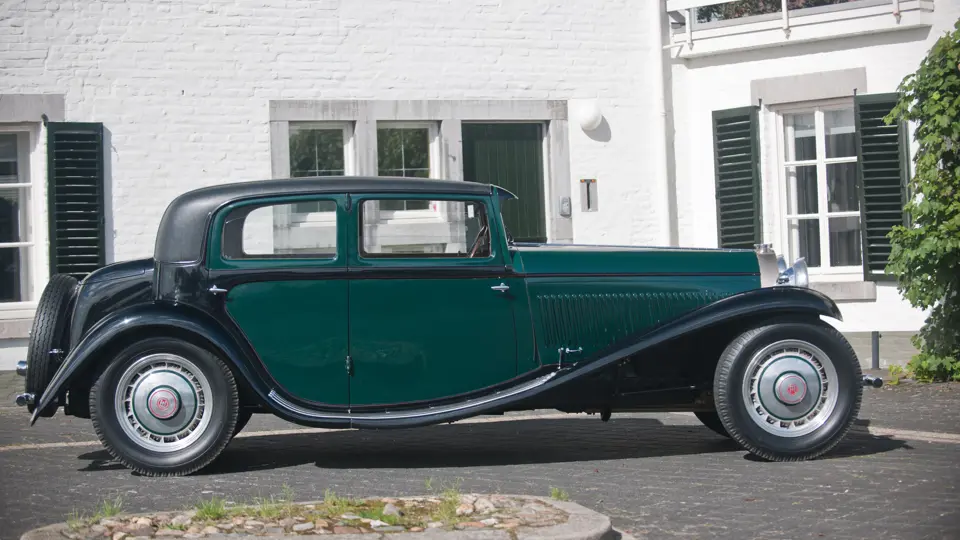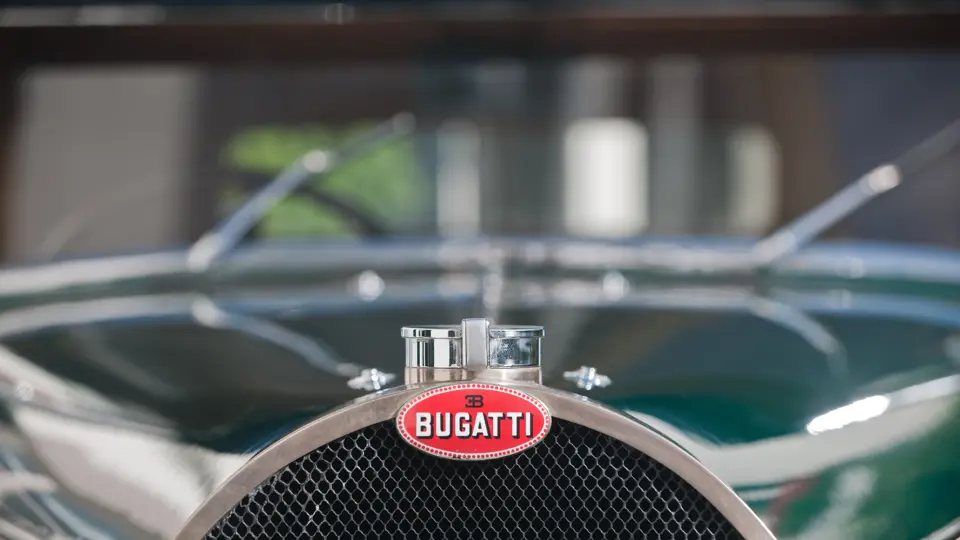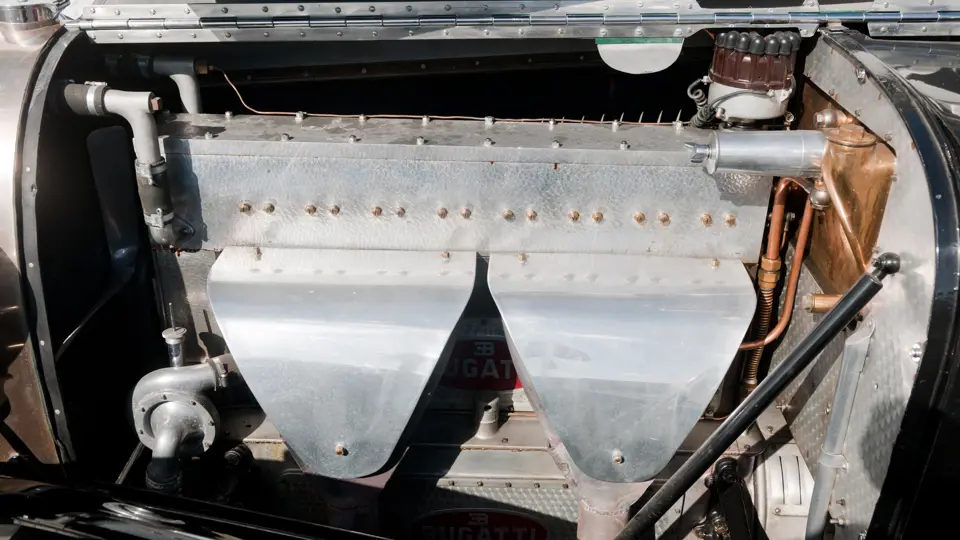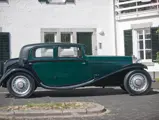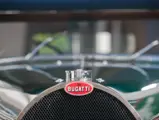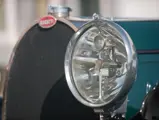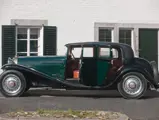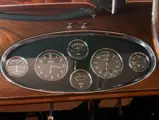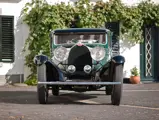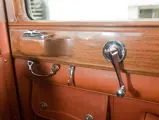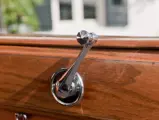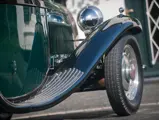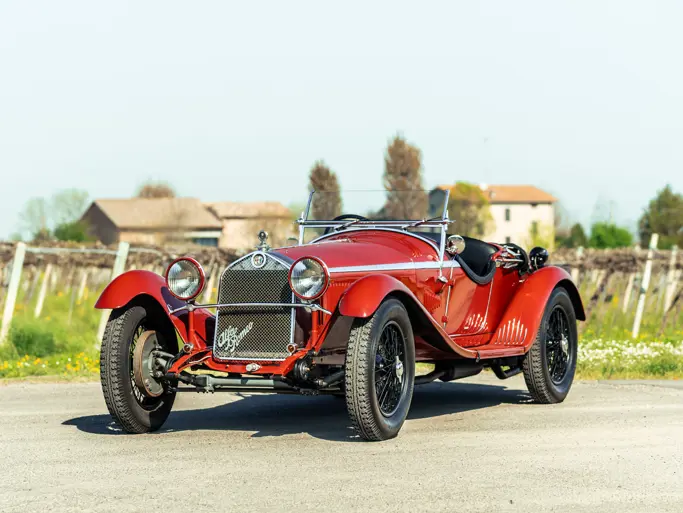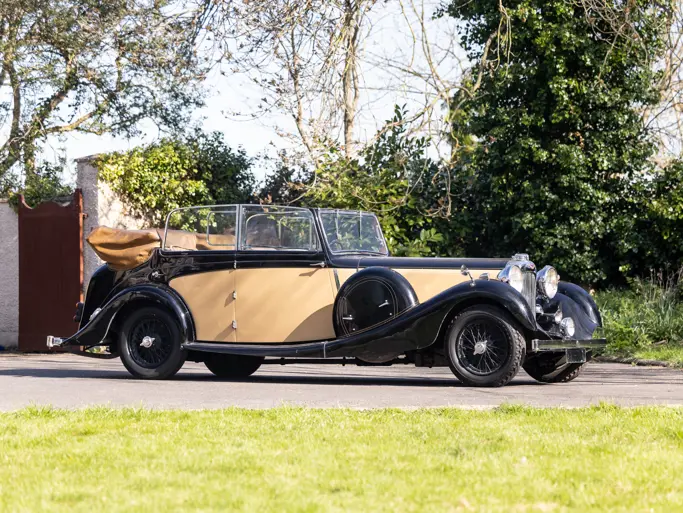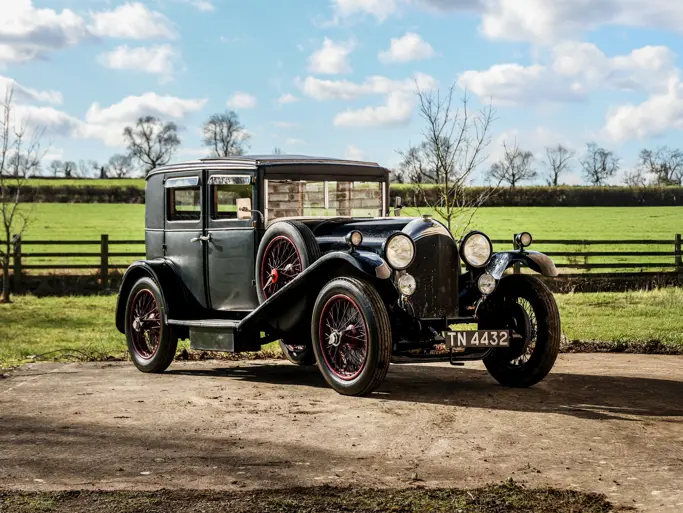140 bhp, 5,359 cc SOHC inline eight-cylinder engine with three valves per cylinder, three-speed manual gearbox, live front and rear axles with front semi-elliptic leaf springs and rear inverted quarter-elliptic leaf springs, and four-wheel, cable-operated drum brakes. Wheelbase: 3,505 mm
• An exceptional, older restoration with original English coachwork
• One of only about 450 examples built and few survivors
• A smaller “companion” model to the T41 Royale
• One of the most elegant T46s in existence
• Formerly in the Dr. Peter Williamson Collection
Barely 30 years elapsed from the emergence of the first Type 13 Bugatti until the cessation of Bugatti production at the onset of WWII. In that time, an almost endless stream of models and variants poured forth from Ettore Bugatti’s works, each of them meticulously crafted from the finest materials and lovingly detailed by dedicated artisans. Le Patron’s obsession with detail was intimately reflected in each automobile built and in the operation and presentation of the Molsheim works itself, a remarkably sanitary and orderly workplace devoted to the production of automotive art.
It is, then, somewhat remarkable that during those years, Bugatti managed to build some 7,500 automobiles in total. That is 250 automobiles per year, an output of well over one automobile per working day, each built essentially in its entirety at Molsheim. The scale of Bugatti’s operation, its founder’s devotion to detail and the length of time over which it was maintained was unprecedented and easily invited comparison with the workshops of jewellers and sculpture foundries that devoted themselves to creation and replication of artistic designs. Unlike these, however, Bugatti’s automobiles also were functional, high-speed machines that balanced their style and finish with performance, handling and comfortable accommodations for their fortunate drivers and passengers.
Of all Bugatti models, one of the most elegant, imposing and luxurious was the Type 46, which was introduced in late 1929, and approximately 450 examples were produced to 1933. The steel ladder-type chassis of the Type 46 featured a long 138-inch (3,505-mm) wheelbase and was powered by an equally impressive, long-stroke 5.4-litre inline eight-cylinder engine featuring a single overhead-camshaft valvetrain. Its impressive specifications included three valves per cylinder (two inlet and one exhaust) and twin spark plugs per cylinder, and it delivered a stout 140-bhp output. Engine durability was also very good, by virtue of the engine block casting itself, which extended down to the main-bearing supports. Consequently, the engine’s structure was highly rigid, thereby providing exceptionally smooth operation.
The three-speed manual gearbox was mounted within a rear-transaxle unit, marking another technical innovation of the basic T46 design. Four-wheel, self-adjusting cable-operated brakes with 16-inch drums provided stopping power. Wire-spoke wheels were used early in the T46 production run, while stylish, vane-type alloy wheels were fitted to the later cars. The T46 also influenced the mechanical specifications of the long-wheelbase T50, which shared the T46 chassis, radiator and gearbox/transaxle assemblies.
The combination of Type 46 attributes, especially when its fine chassis and engine is clothed in sophisticated coachwork, makes it one of the most appreciated Bugattis. In fact, the T46 is perhaps best known as the “Petit Royale” and so-named for its striking resemblance, on a somewhat smaller scale, to the Type 41 Royale, which remains famous for its massive 4.3-metre wheelbase and 12.8-litre engine. Despite its impressive specifications, however, the Type 41 was essentially a car with an extremely limited market, particularly considering it was conceived during the immediate pre-Depression period. With the Type 41 Royale’s engine displacing roughly four times the volume of the next Bugatti model offered, the Type 46 “Petit Royale” very capably bridged this otherwise massive gap in the marque’s model range.
As described in the definitive book Bugatti Type 46: La Petite Royale by Bohuslav Klein, Roland Saunier and Kees Jansen, the T46 remains highly significant in the Bugatti pantheon as one of the marque’s most influential road-going models. As they wrote, “No other Bugatti Type motivated so many European bodymakers in the thirties, to build such exclusive bodies, as this one did.” They further stated that no fewer than some 40 custom coachbuilders applied their unique artistry to the T46 chassis during the model’s relatively brief production run.
While all too many original T46 chassis have been re-bodied over the intervening years, this wonderful example from 1930 retains its original English Freestone & Webb coachwork and remains one of the most elegant closed T46s extant in the world today, particularly with its flowing Type 55-style front fenders and running boards. It was ordered new on 28 December, 1930 by the London Bugatti agent Colonel Sorel as part of a package of eight rolling chassis. Of those eight chassis, each one costing FRF 63,168, this one was given four-door sports saloon coachwork by Freestone & Webb and was delivered new to Lord Rothesay, although other accounts have the car delivered to Victor Rothschild. The next owner was Eric Giles in Dursley, who had owned 11 other Bugattis and finally sold the car in 1937 to Roland Cookson for use by his wife. Derry Mallalieu was the subsequent UK owner in the 1940s, at which point the car’s engine had been replaced by a correct unit of the same type, a common occurrence on these early Bugattis. Since that time, the car has been in the care of a known succession of enthusiasts in the United States, including noted collector and former Atlantic owner Dr. Peter Williamson, and participated in the Grand Rallye International Bugatti in Alsace, France (1987).
A fabulous older restoration, it notably features interior appointments that are far richer in contrast to its French-bodied T46 counterparts. It is finished in green with tan upholstery, a particularly attractive colour combination that highlights the car’s attractive overall proportions. With known ownership history from new, this T46 “Petit Royale” in short represents an unparalleled opportunity to acquire an exceptional example of one of Bugatti’s most influential designs, complete with its original and elegant, yet sporting, Freestone & Webb custom coachwork.


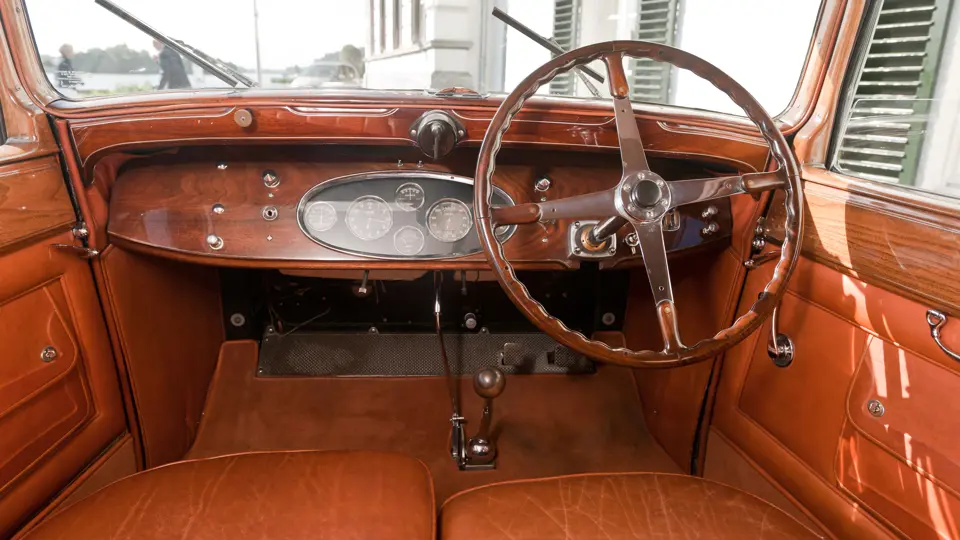

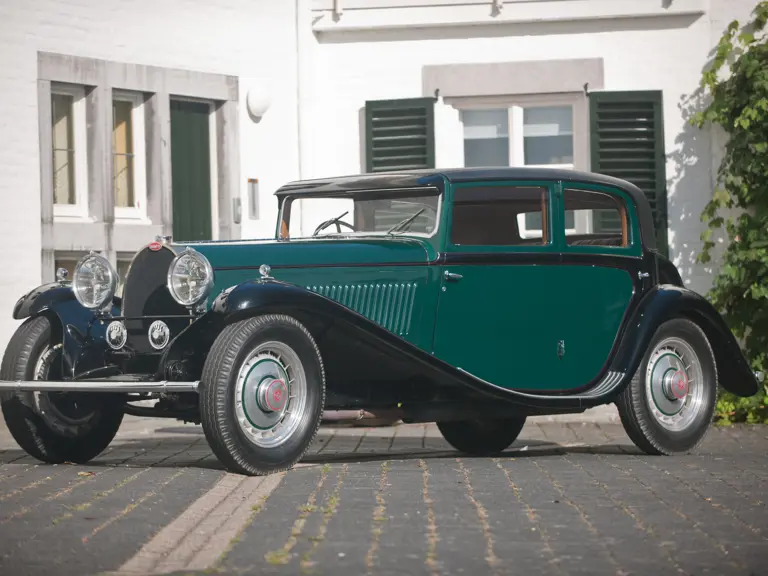
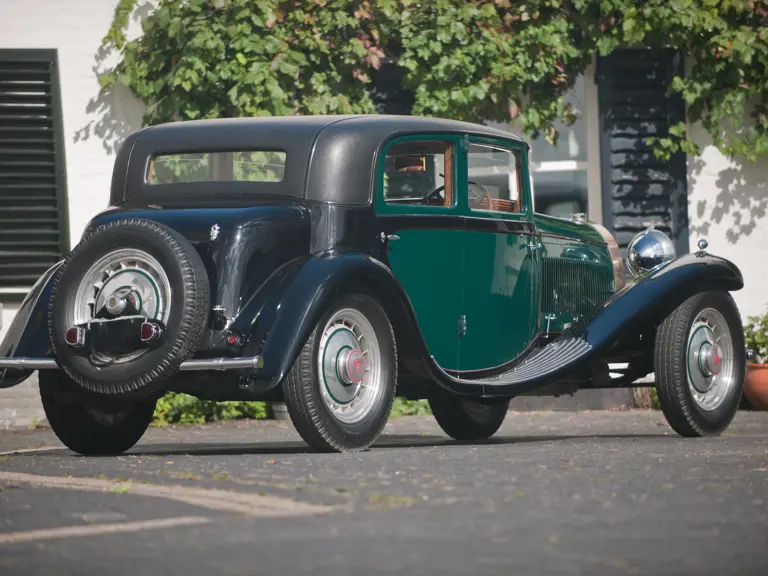
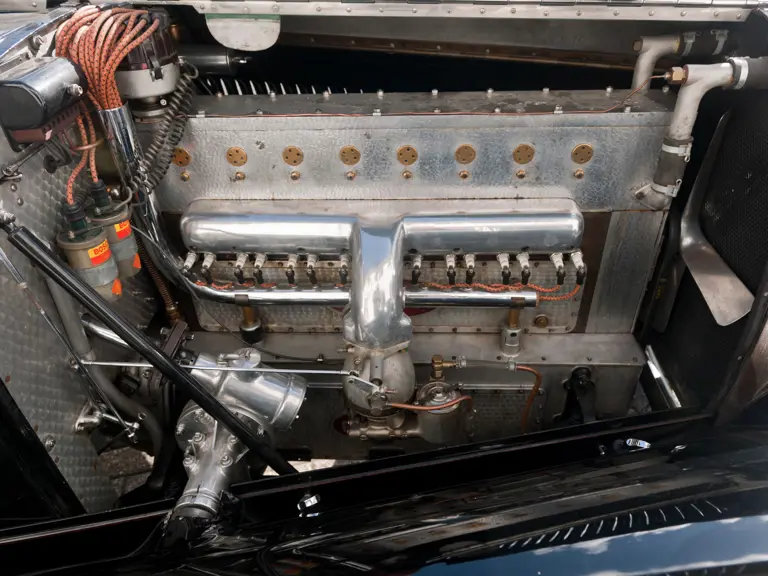

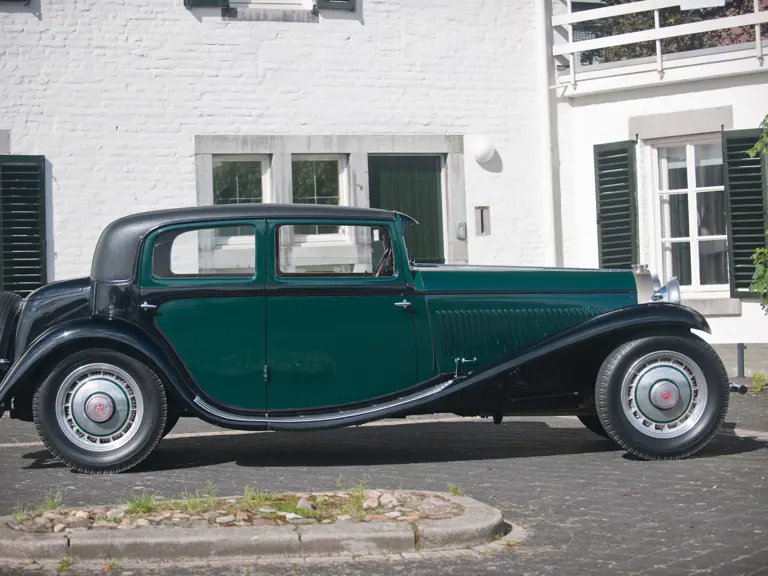
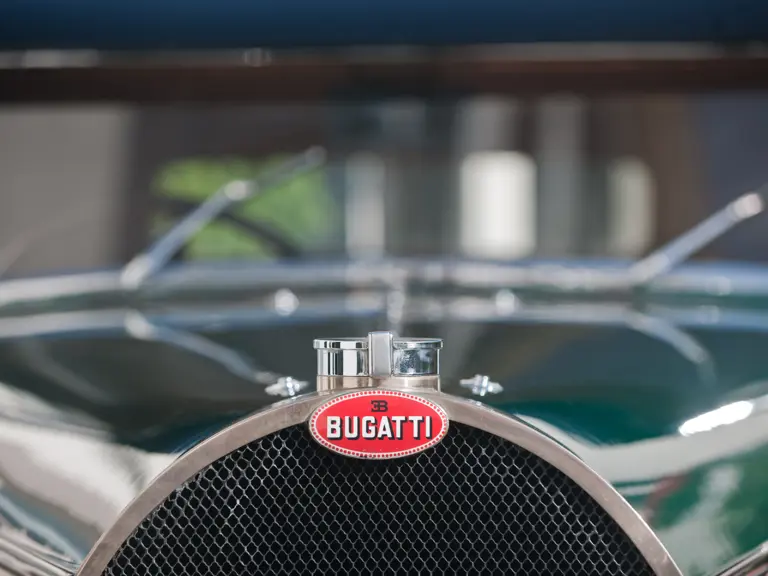
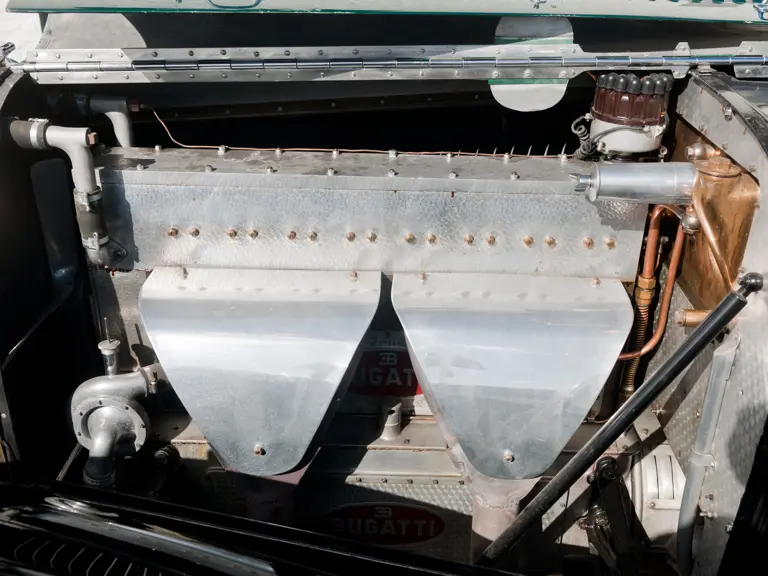
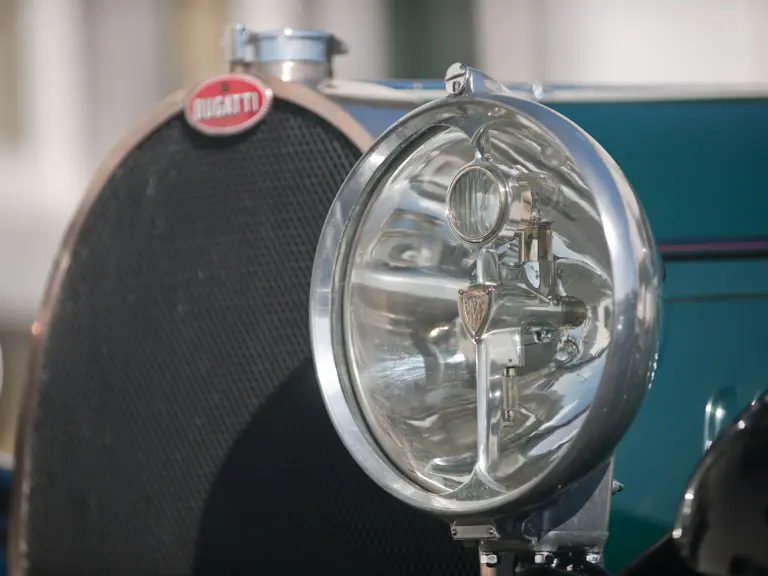
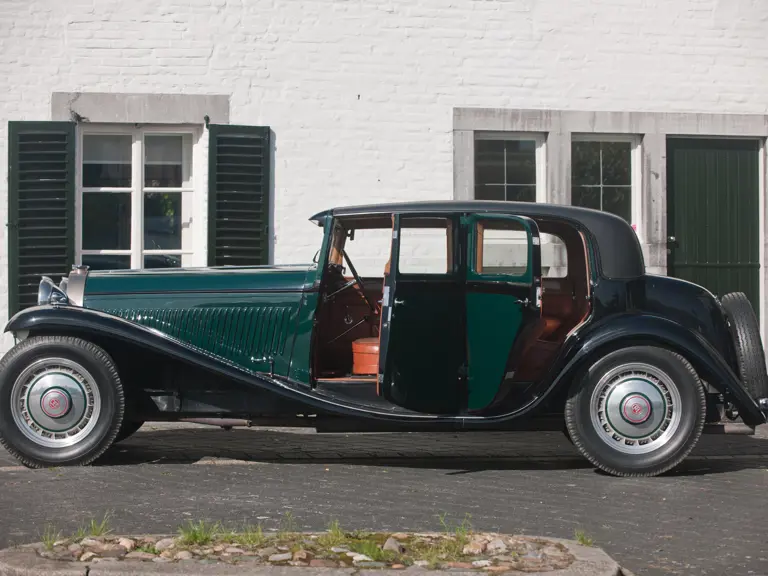
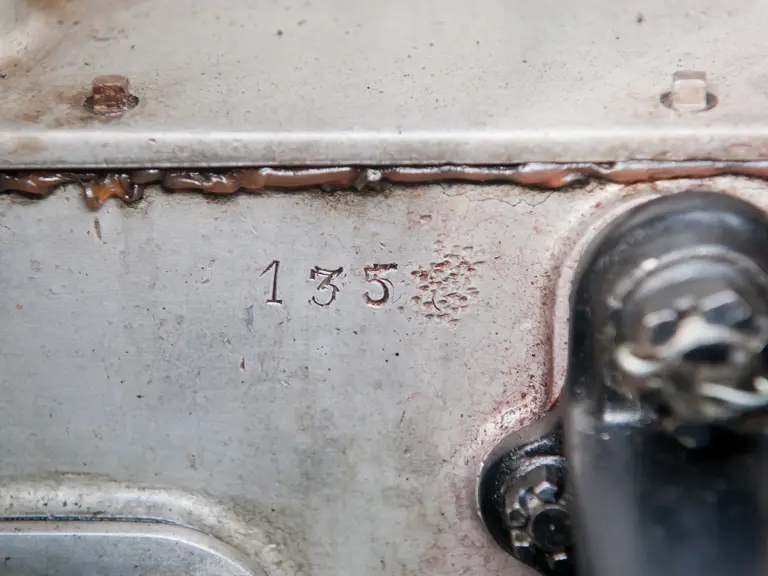
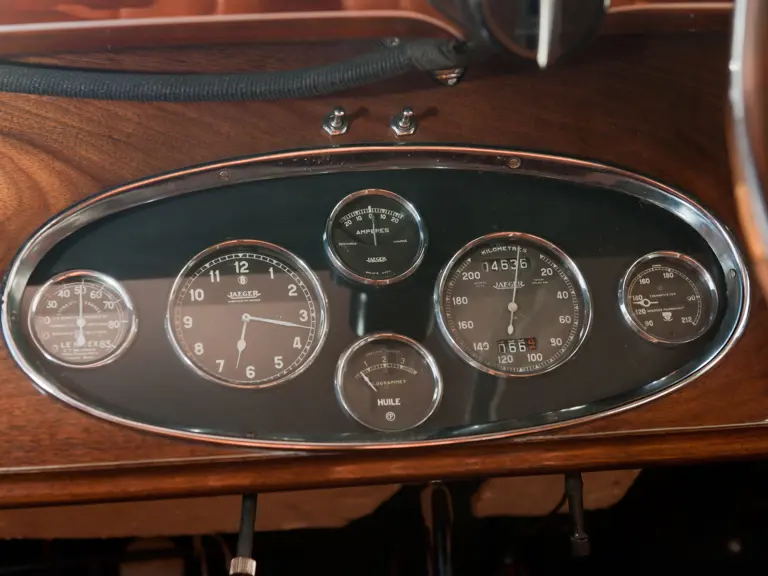
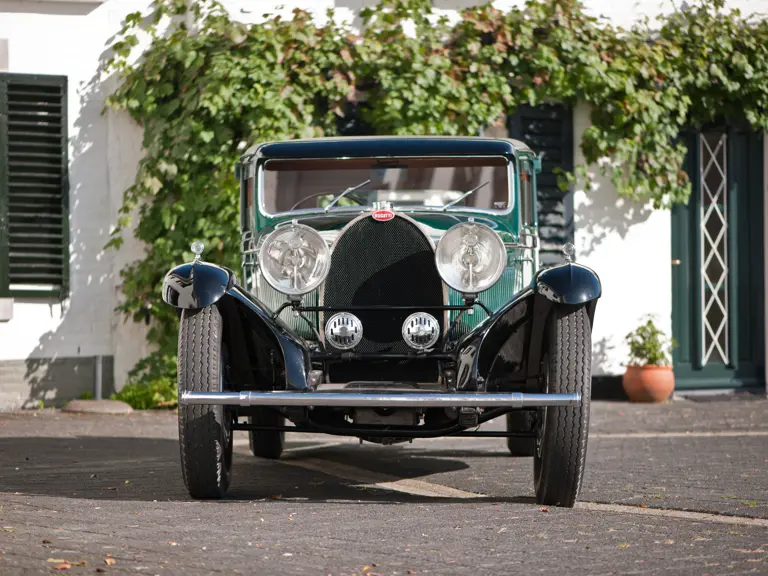
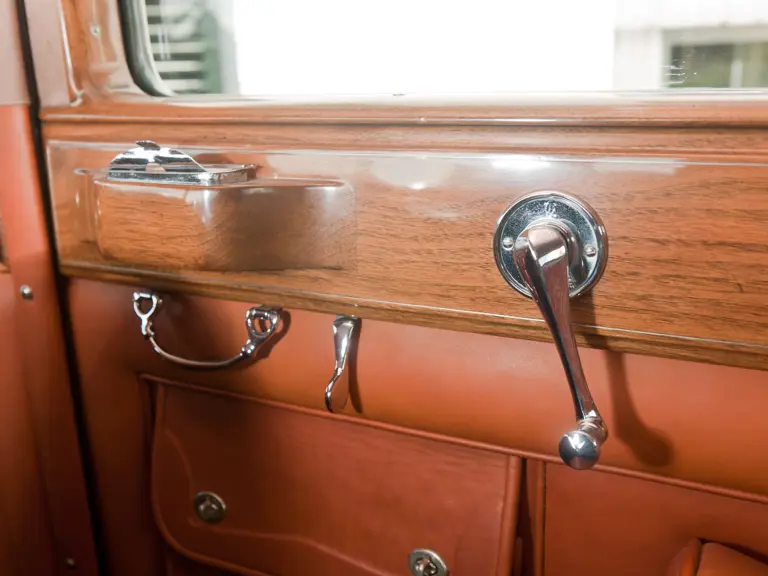
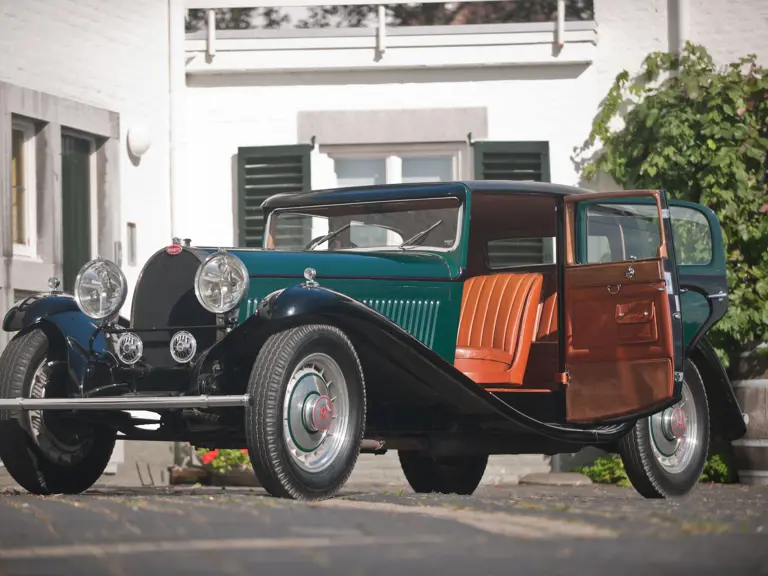
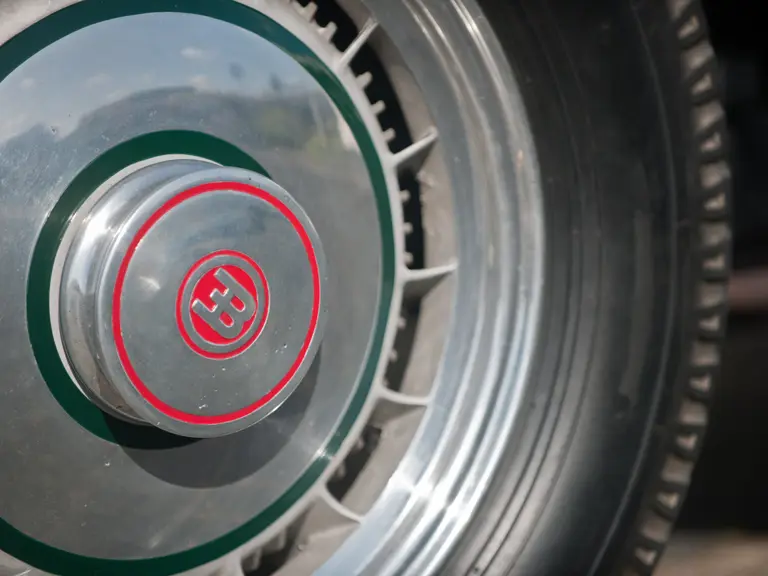
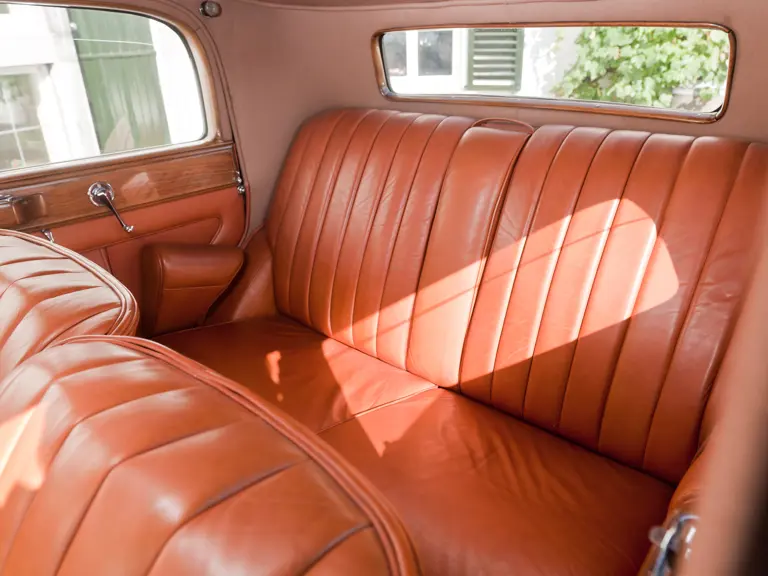
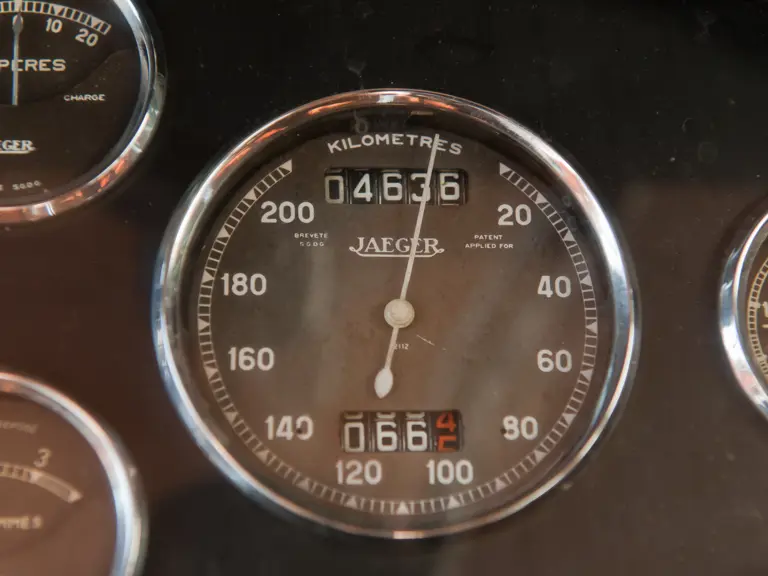
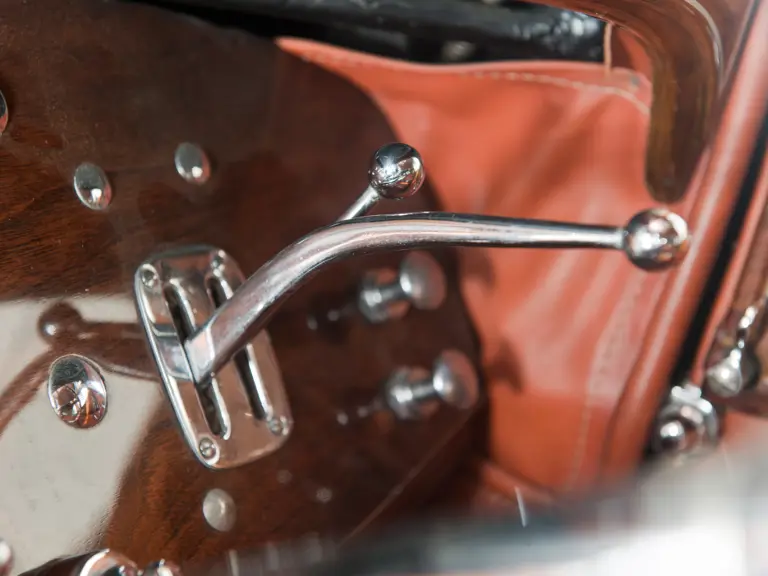
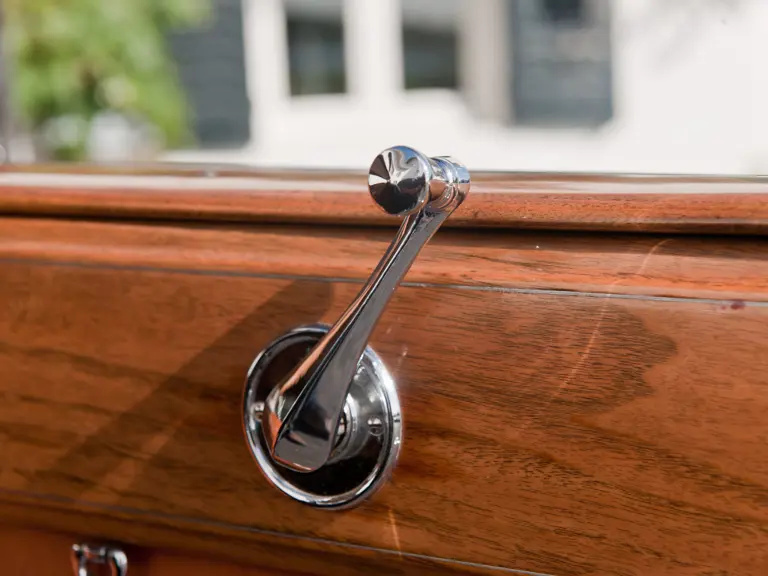
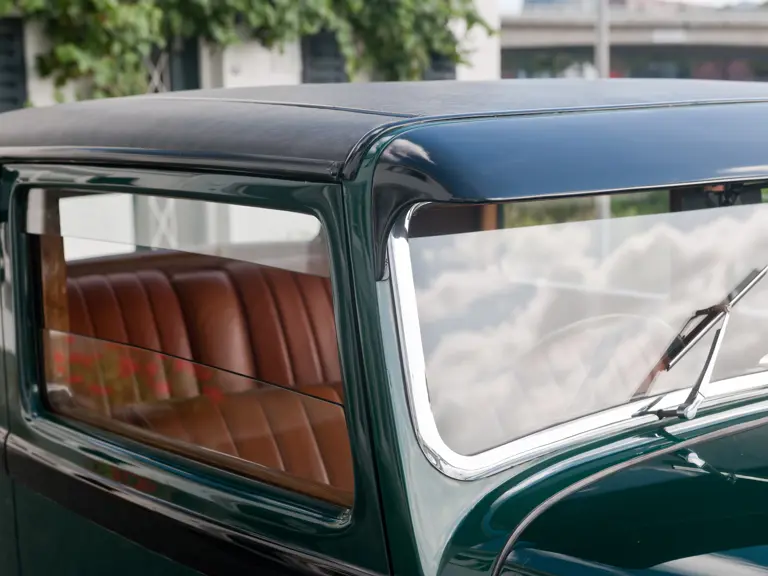
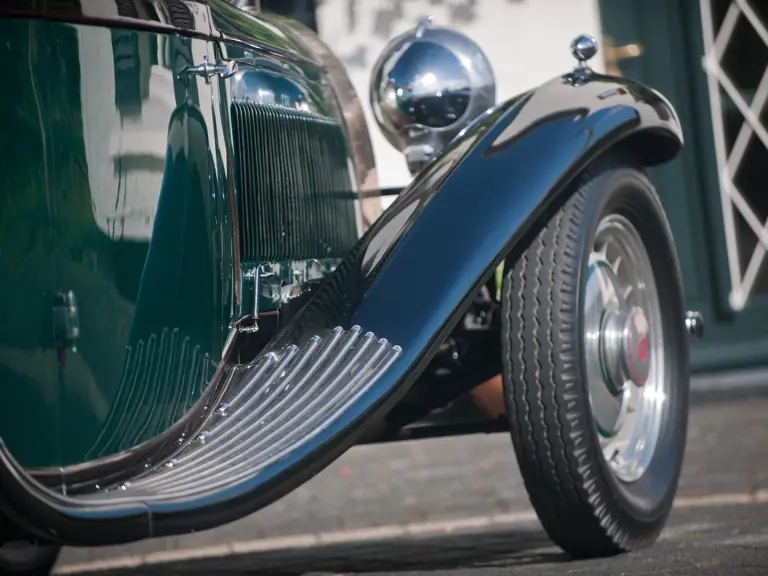
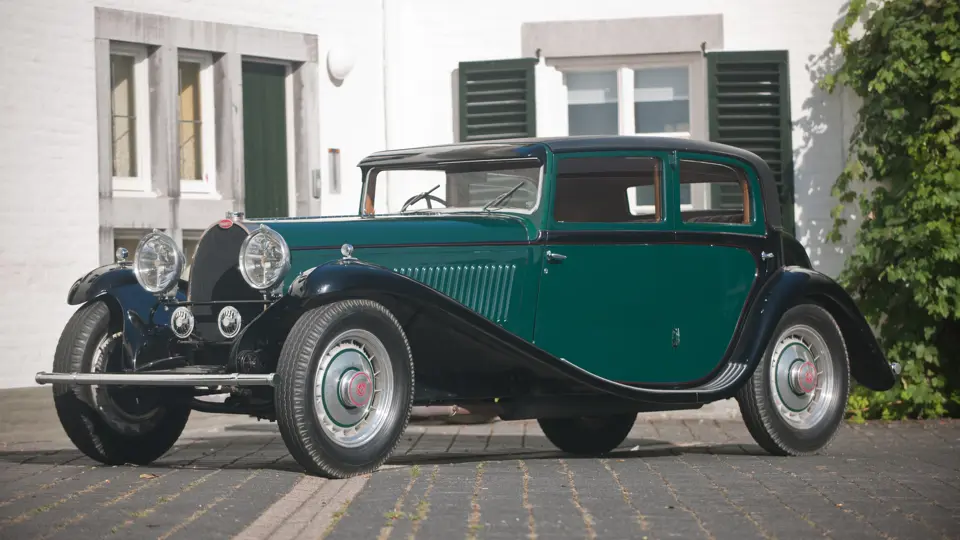
 | London, United Kingdom
| London, United Kingdom
